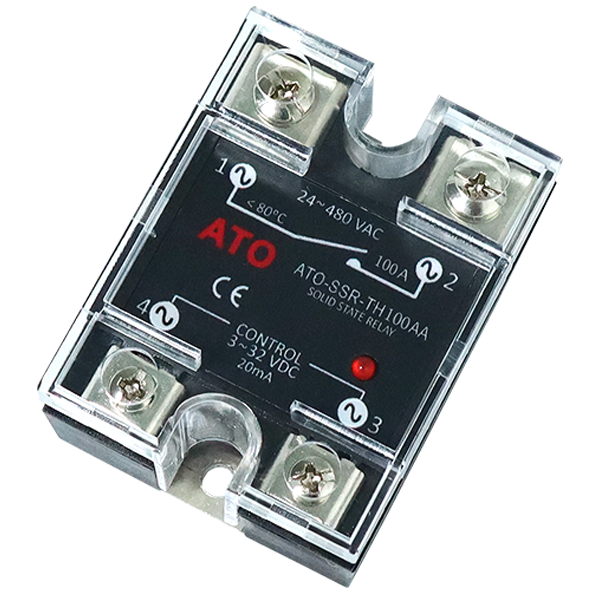Solid State Relays
Solid state relays, as known as SSRs, are typically used to control large current loads with a small input control signal. SSR relay is a kind of contactless switch composed of microelectronic circuit, discrete electronic device and electronic power device, which realizes the isolation between control end and load end.
ATO is a Chinese market pioneer in solid state relay technology with one of the broadest range of products in the industry. ATO manufactures single phase and 3 phase solid state relays with wholesale price, including DC-AC and AC-AC, with load currents from 10A to 120A. In addition, compact industrial solid-state relay ATO supplied provides DC control AC with load current ranges of 60 amp, 80 amp, and 350 amp. They have been widely used with the advantages of high reliability, no contact, long life, fast speed, small anti-interference and so on. Order solid state relays from ATO automation shop now!
Single Phase AC-AC SSR Relay
ATO AC-AC SSR has different current of 10A ~ 120A for your choice, facory direct sales with wholesale price.
Read More
Single Phase DC-AC SSR Relay
Single phase solid state relay is a non-contact switch composed of microelectronic circuits. Voltage type is DC to AC.
Read More
3 Phase AC-AC SSR Relay
ATO supplies AC to AC 3 phase SSR for
your applications, with 3-32V DC input and 24-480V AC output,
panel mount.
Read More
3 Phase DC-AC SSR Relay
DC to AC 3 phase SSR relay is a non-contact switch composed
of microelectronic circuits, discrete electronic devices, and power
electronic power devices.
Read More
Industrial SSR Relay
Single phase industrial solid state relay provided by ATO,
60, 100, …, 350A load current with 3-32VDC control
24-440VAC, high switching speed and no noise.
Read More
SSR Heat Sink
SSR heat sink is designed for single phase SSR and 3 phase solid state relay, suitable for single phase solid state relay or one piece of three phase solid state relay.
Read More
DIN Rail Mount SSR Relay
All-in-one SSR solid state relays with heat sink and DIN rail mounting are of high strength, impact resistance and strong vibration resistance, with low requirement for input current.
Read More

















